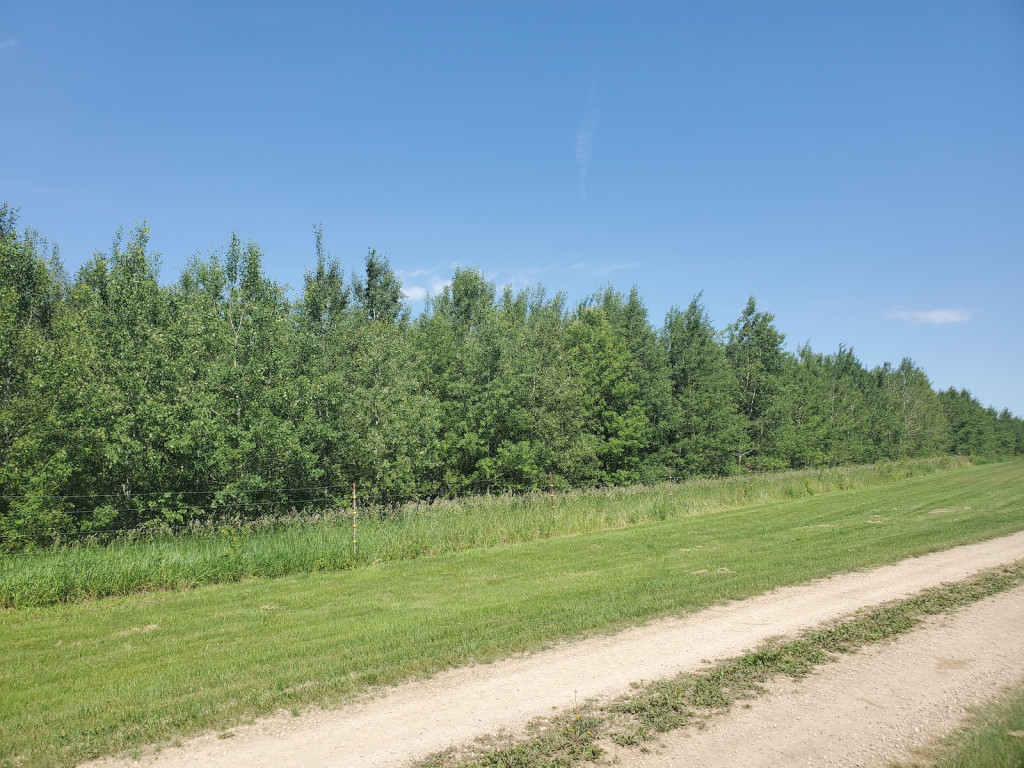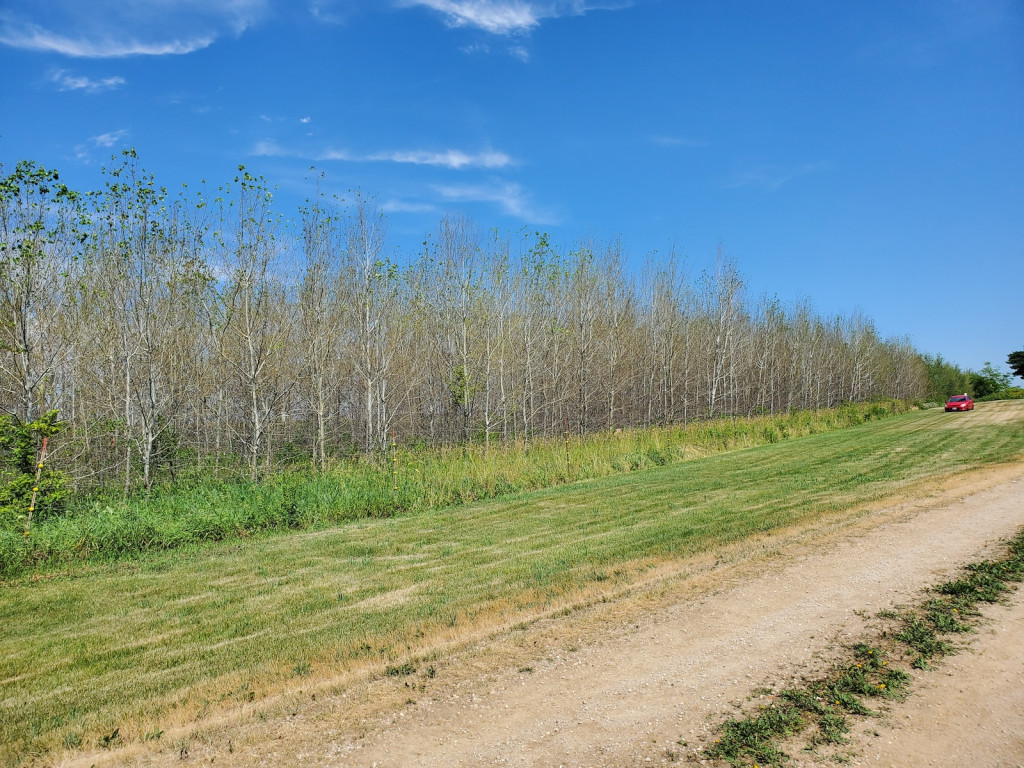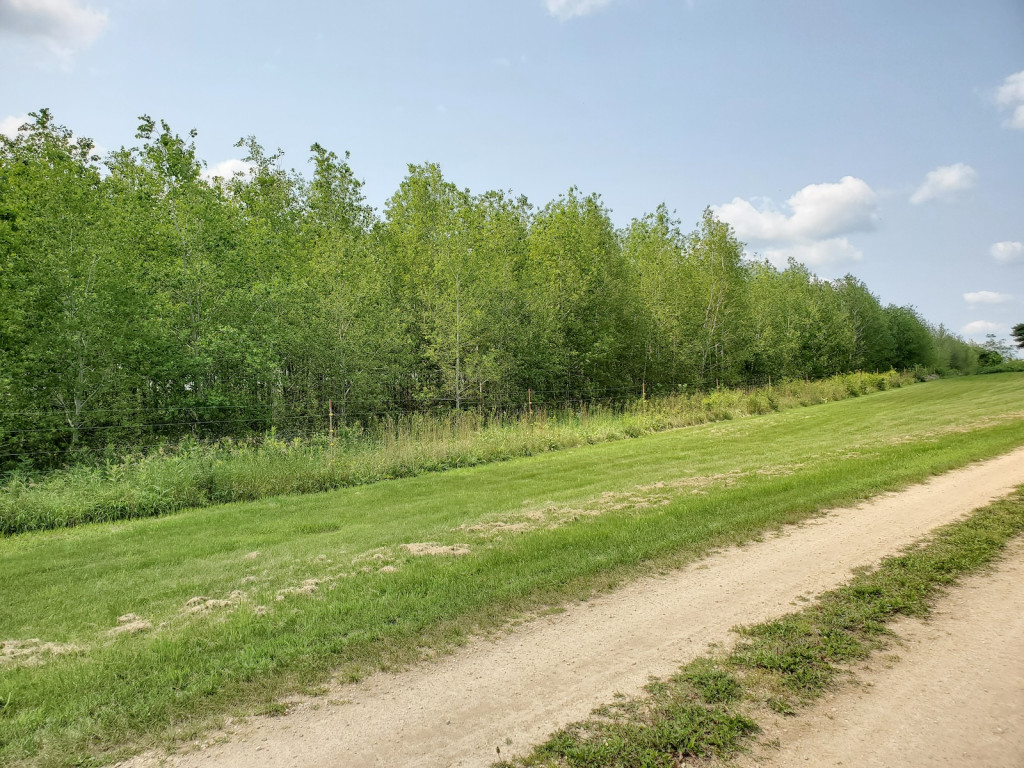Trees attacked by invasive caterpillars develop defense mechanisms that can harm native insects

Rick Lindroth, professor emeritus of entomology, and Patricia Fernandez, an ecologist and professor visiting on a Fulbright scholarship from the University of Buenos Aires.
An invasive insect with a voracious appetite can cause serious problems for a popular native moth that prefers the same food source — even though the two are never in direct competition for a meal, according to new research from ecologists at the University of Wisconsin–Madison.
Since the early 2000s, gypsy moth caterpillars imported from Europe have flexed their taste muscles in Wisconsin, stripping entire stands of leaves in remarkably destructive feeding frenzy during late spring and early summer. While the gypsy moth infestation waxes and wanes, the caterpillars can appear in significant numbers seemingly out of the blue.
Such was the case in 2021, when Rick Lindroth, professor emeritus of entomology, and members of his lab hiked into a research forest of quaking aspen that Lindroth planted in 2010 just a few miles from UW-Madison at the university’s Arlington Agricultural Research Station. The team was excited to begin their planned research after much of the 2020 fieldwork season was lost to the COVID pandemic.
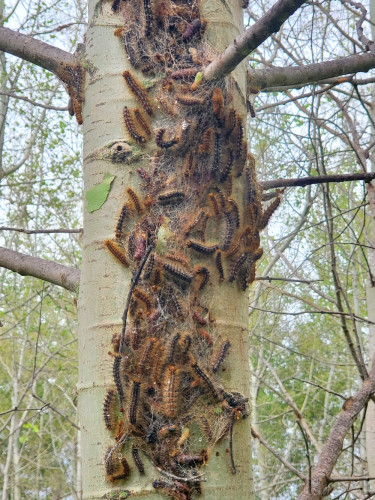
Gypsy moth caterpillars gather on a tree trunk. The voracious larvae of the invasive moth can completely strip trees of their leaves. Photo by Mark Zierden
“There were spongy masses of moth eggs everywhere!” says Lindroth. “We wanted to start some experiments, but there were too many invasive insects to continue. There was no way to remove them. We thought we were lost.”
By a lucky coincidence, Lindroth says, his lab had an extra pair of hands that summer: Patricia Fernandez, an ecologist and professor visiting on a Fulbright grant from the University of Buenos Aires. Lindroth and Fernandez developed a new research plan. They knew the gypsy moth caterpillars were likely to eat every leaf on their trees, so why not study the consequences?
One aspect of Lindroth’s previous work involved studying how different genetic and environmental factors influence the way plants defend themselves against attack. The researchers wondered whether an aspen’s defenses – which they deployed against marauding, invasive gypsy moth caterpillars – might cause unusual damage to native species that have evolved to feed on trees that have minimal chemical protection.
“Every wild plant defends itself against a range of herbivores through a range of mechanisms, and chemistry is one of the most important,” says Lindroth. “Aspen trees – like their relatives, the willow trees – produce a range of salicylate-like compounds that resemble aspirin and act as poisons to protect the trees from many insects.”
Because the gypsy moth caterpillar ends its leaf-feeding spree relatively early in the aspen’s growing season, the defoliated trees produce a second flush of leaves to gain enough energy to survive (though not necessarily thrive) the winter and the next growing year. As expected, that second green canopy appeared on Lindroth’s patch of forest in early July. But the replacement flush was different in at least one important way.
“These trees had ramped up their defenses,” says Lindroth. “By mid-summer, they had formed completely new foliage that had, on average, an eight-fold higher concentration of defense chemicals.”
This is when the gypsy moth caterpillars pupate and turn into moths. But in mid-summer, the caterpillars of the striking native Polyphemus moth—North America’s second-largest moth—hatch and try to fill their own growling stomachs.
In their laboratory, the researchers fed some Polyphemus caterpillars leaves from the gypsy moth-infested plot and other Polyphemus caterpillars leaves from an aspen stand untouched by gypsy moths (although it grew only 6 kilometers away).
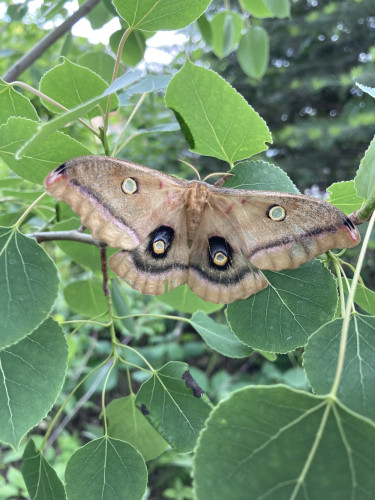
Adult native Polyphemus moths have a wingspan of over 15 centimeters, distinctive eyespots, and their larvae have a preference for the leaves of many of the same trees as the caterpillars of the gypsy moth. Photo by Rick Lindroth
Less than 18 percent of the native moth caterpillars that fed on the highly toxic leaves left by the gypsy moth survived. The Polyphemus caterpillars that fed on the undamaged trees were about four times more likely to reach the next life stage.
“We see how an invasive species harms a native species – a valued, charismatic, beautiful moth – by altering the quality of its food plant. Without the two ever meeting each other,” says Lindroth. “That’s what’s unique about this study. And it suggests that leaf loss by an invasive species could affect an entire community of other organisms by strengthening the plants’ toxic defenses. This research has identified another factor that could be contributing to the global insect decline.”
The findings, published today in the journal Ecology and Evolution, also suggest that diverting resources to produce chemical defenses reduces tree growth compared to normal years, which in turn affects the ability of forests to increase wood mass and sequester carbon in ways that mitigate climate change.
“The aspen is the most widespread tree species in North America,” says Lindroth. “Every breath we take contains oxygen molecules produced by the aspen. It is a very important forest species, and it is amazing to see the impact an invasive insect has on the forest community by changing the toxicity of the food landscape.”
This research was supported by grants from the U.S. Department of Agriculture (WIS03003 and 2016-67013-25088), the National Science Foundation (DEB-1456592), and a Fulbright Visiting Scholar Fellowship.

